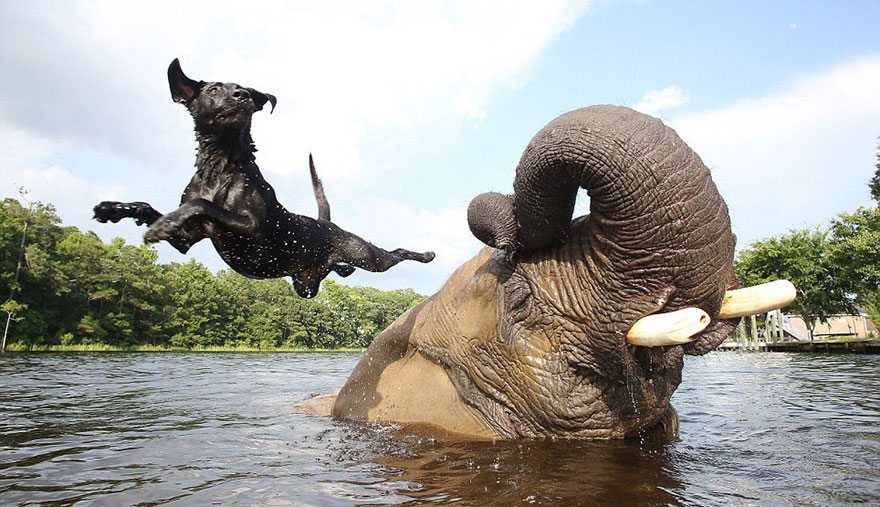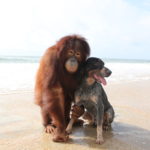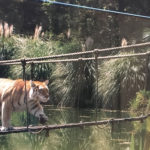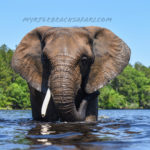The Animals
Frequently Asked Questions
Share this page
Is human contact good for wildlife?
What are living conditions like for the Safari’s animals?
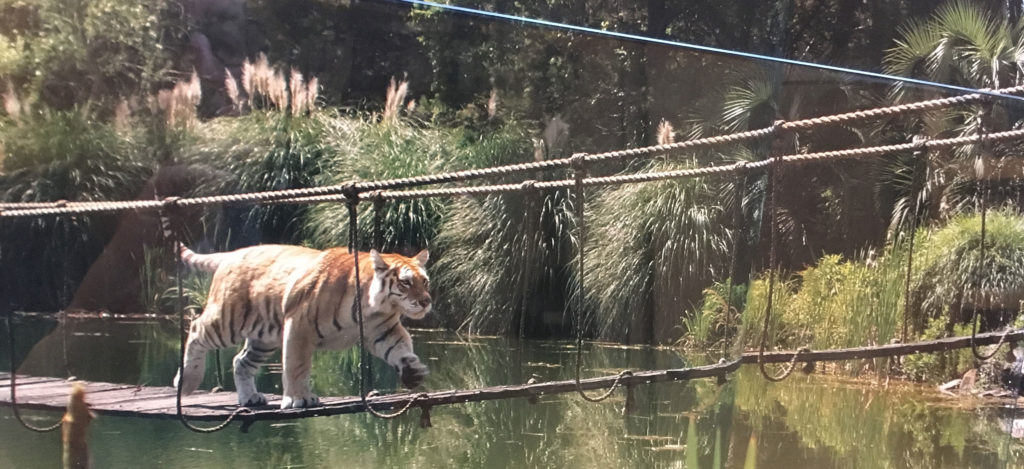
THE SAFARI IS LIKE A WILDLIFE LUXURY SPA: 55 manicured acres that include large open spaces, covered forests, fresh-water ponds, tall grasses, purling waterfalls, climbing platforms, exploring caves, and rock outcroppings. The animals move freely from one environment to another, much as they would if living in the wild. The MBS staff offers animal residents the best in dietary and veterinary care, and staff members live at the preserve to ensure that animals are tended to every hour of every day.
Why do animals at the Safari behave so well?
MYRTLE BEACH SAFARI CAREGIVERS LOVE THE ANIMALS in their charge, and the bonds between them are based on familiarity and trust. Each day caregivers offer the animals new experiences including nature walks, swimming in a customized pool and in the nearby river, running games, and a rotating selection of age-appropriate toys. The animal residents behave so well because they enjoy their life at the Safari.
Why do animals at the Safari behave so well?
MYRTLE BEACH SAFARI CAREGIVERS LOVE THE ANIMALS in their charge, and the bonds between them are based on familiarity and trust. Each day caregivers offer the animals new experiences including nature walks, swimming in a customized pool and in the nearby river, running games, and a rotating selection of age-appropriate toys. The animal residents behave so well because they enjoy their life at the Safari.
What’s a typical day for animals at the Safari?
TIGERS, APES AND OTHER RESIDENTS of the Safari interact with the public for twenty minutes or so, three days per week, from March through October. The rest of the time, they roam through their spacious habitats, splash in their 50,000-gallon pool, and play with their animal friends. At our second location—Preservation Station located in North Myrtle Beach’s Barefoot Landing—cubs interact for brief periods with visitors, and the rest of the day they spend playing and napping.
Where do the Safari’s animals come from?
SOME WERE RESCUED. Bubbles the elephant was an ivory orphan rescued from poachers. One of the lions was found wandering around a golf course. When some of the big apes were rescued from abandoned medical research laboratories, they still had experimental tubes in their limbs. Other animals were born here as part of the Species Survival Trust (SST), a well-known program for preserving genetic diversity. As a result, some of our tigers are the only remaining members of their particular variations.
Why breed wild animals in captivity?
THE MBS HELPS SAVE HUNDREDS OF SPECIES FROM EXTINCTION by breeding animals that are failing in the wild. The main reason for this failure is that humans have destroyed 99% of all natural wildlife habitats. People often ask, “Shouldn’t these creatures be allowed to live in the wild?” Yes, but tragically the “wild” has been destroyed through over-development, mass tourism, and environmental damage. For example, Africa is ten times the size of the United States, yet only 10% of the land remains viable as home for megafauna. In the case of tigers, many scientists judge them to already be functionally extinct in the wild. The MBS invests heavily in tiger conservation efforts, but with only 3,000 tigers left in the wild the only way to avoid total extinction is through captive breeding and management of bloodlines. For more information, visit www.speciessurvivaltrust.org.
What happens to all the cubs that are born at the Safari?
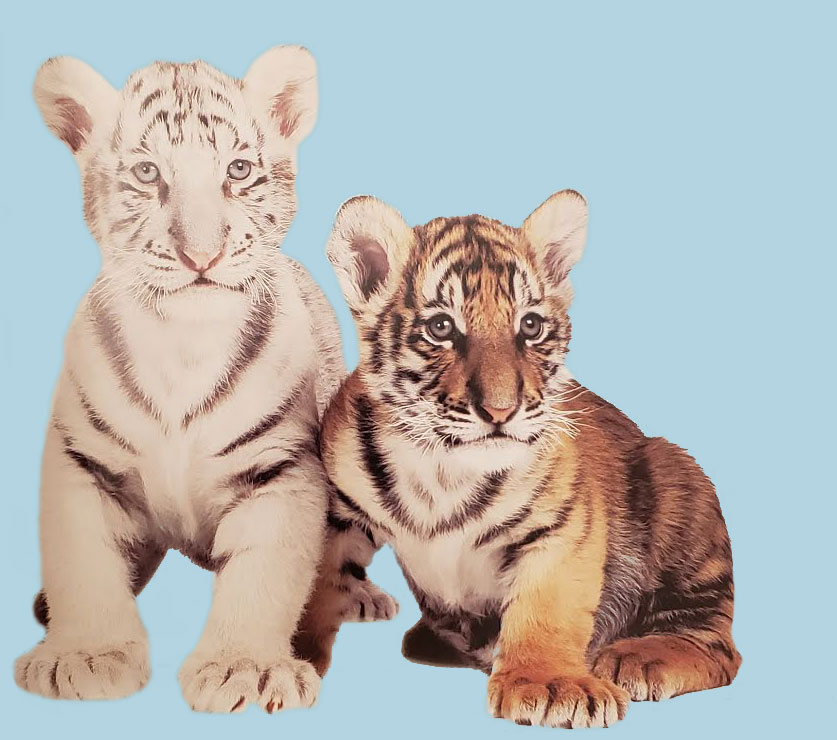
SOME GUESTS ARE CONCERNED: What do you do with all the cubs? The number of cubs born each year at the Safari is less than a dozen. The Safari does not mass-produce animals. And since our tours are seasonal, we try to ensure that cub births coincide with the spring months. Even during peak summer season, there are tours only three days per week and three or four cubs are enough to provide all our guests with an up-close experience.
Cubs at the Safari are born here as part of a captive tiger breeding program run by the Species Survival Trust (SST). The purpose of the program, conducted in partnership with several university genetics departments, is to create a genetic backup for the world’s rapidly dwindling wild tiger populations.
Tiger cubs are our most popular Animal Ambassadors. Safari guests are inspired by the hands-on encounter with these miracles of nature, an experience which has led many of our visitors to become involved with wildlife conservation efforts. However, a cub’s role as Animal Ambassador lasts only four months on average. After that, they remain under our care for the rest of their lives, either on site at the Myrtle Beach Safari preserve or else at zoological facilities that have been vetted and accredited by the SST.
Is it okay for people to hold wildlife cubs?
YES, FOR MANY REASONS. First, allowing cubs to have physical contact with humans reassures the cubs that humans are safe and enjoyable to be around. Since public interaction is closely monitored and limited by Safari staff, the cubs find the event exciting and fun. Second, cubs that acclimate to human contact will happily allow their veterinary doctors to check their teeth or take a blood sample. Many zoos must restrain or sedate their animals to perform such tests. Second, people save what they care about, and holding cubs inspires many of our guests to get active in wildlife conservation. These wildlife interactions have generated millions of dollars that fund conservation work here and abroad.
Why are cubs taken away from their mothers?
LIKE SOME HUMAN MOMS, not all tiger moms take good care of their kids. Often the moms don’t clean or feed their offspring, and frequently the mother tigers abandon their cubs while they go off to hunt. This leaves the cubs to die of starvation, exposure, or predation. Some tigers make great moms but others are neglectful, and hand-raising the cubs creates a bond with the MBS caregivers and optimizes the cubs’ chances of surviving.
Experience has shown as well that tiger cubs growing up among humans at the Safari exhibit less stress and greater health than cubs raised in zoos.
Why are hand-raised cubs better off than cubs left in the wild?
ANIMALS THAT LIVE WITHOUT HUMAN CONTACT are called feral. Feral dogs and cats may look like domestic pets, but their behavior is different: feral animals are more aggressive, they frighten easily, distrust human companionship, and survive by fighting and killing. Animals who are not hand-raised, who do not receive daily care and feeding—especially during the critical puppy/kitten stage, between 2-12 weeks—remain fearful of humans throughout their life. Without early contact, they do not understand what humans are. We see similar wary behavior in big cats and wild dogs such as wolves and foxes that are raised in zoos with hands-off policies.
Non-feral big cats are much less suspicious of humans, and consequently, they are easier to care for. For instance, non-feral cats can be examined by veterinary staff without dangerous sedation.
Where did your elephant come from?
BUBBLES THE ELEPHANT WAS RESCUED by the Safari in 1982, when she was abandoned in Africa. Her herd was slaughtered for their ivory, and baby elephants by the thousands were left to perish without the care of their mothers. Bubbles was one of the lucky few that survived. Today she is a happy, easygoing giant who spreads her affection to visitors—and to her own pet dog named Bella.
Is Bubbles harmed when she lets people climb on her back?
NOT AT ALL. An elephant’s spinal structure is like that of a horse or camel: super-strong and built to carry heavy weight. Bubbles weighs 9,000 pounds—the size of ten horses. She could carry ten people on her back without any discomfort. Just as important, Bubbles has made it clear she enjoys playing with visitors. When swimming, she often picks people up with her trunk and places them on her back, one right after the other. This is not something we taught her: it is a game she invented on her own.
